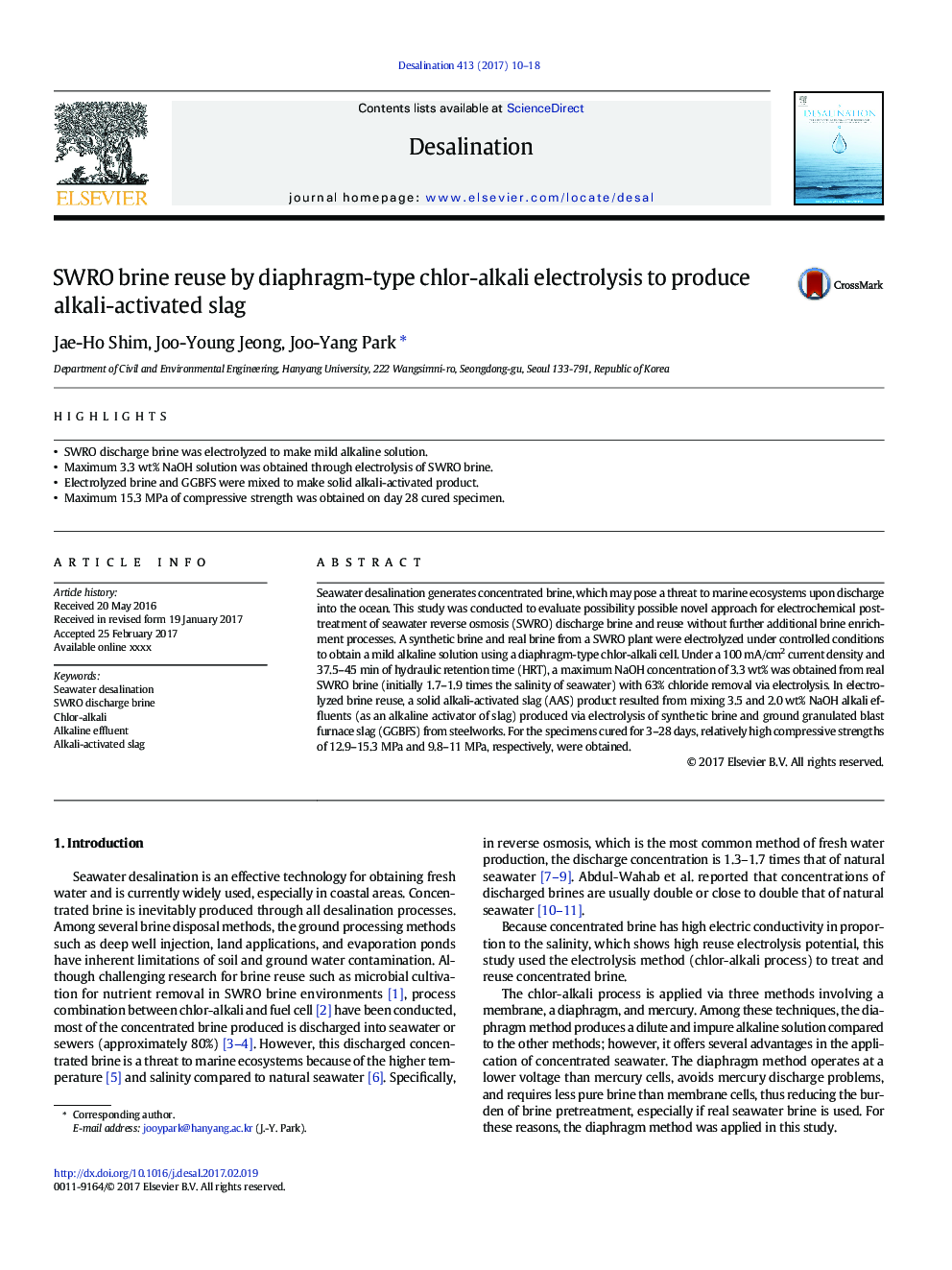| Article ID | Journal | Published Year | Pages | File Type |
|---|---|---|---|---|
| 4987772 | Desalination | 2017 | 9 Pages |
Abstract
Seawater desalination generates concentrated brine, which may pose a threat to marine ecosystems upon discharge into the ocean. This study was conducted to evaluate possibility possible novel approach for electrochemical post-treatment of seawater reverse osmosis (SWRO) discharge brine and reuse without further additional brine enrichment processes. A synthetic brine and real brine from a SWRO plant were electrolyzed under controlled conditions to obtain a mild alkaline solution using a diaphragm-type chlor-alkali cell. Under a 100Â mA/cm2 current density and 37.5-45Â min of hydraulic retention time (HRT), a maximum NaOH concentration of 3.3Â wt% was obtained from real SWRO brine (initially 1.7-1.9 times the salinity of seawater) with 63% chloride removal via electrolysis. In electrolyzed brine reuse, a solid alkali-activated slag (AAS) product resulted from mixing 3.5 and 2.0Â wt% NaOH alkali effluents (as an alkaline activator of slag) produced via electrolysis of synthetic brine and ground granulated blast furnace slag (GGBFS) from steelworks. For the specimens cured for 3-28Â days, relatively high compressive strengths of 12.9-15.3Â MPa and 9.8-11Â MPa, respectively, were obtained.
Related Topics
Physical Sciences and Engineering
Chemical Engineering
Filtration and Separation
Authors
Jae-Ho Shim, Joo-Young Jeong, Joo-Yang Park,
